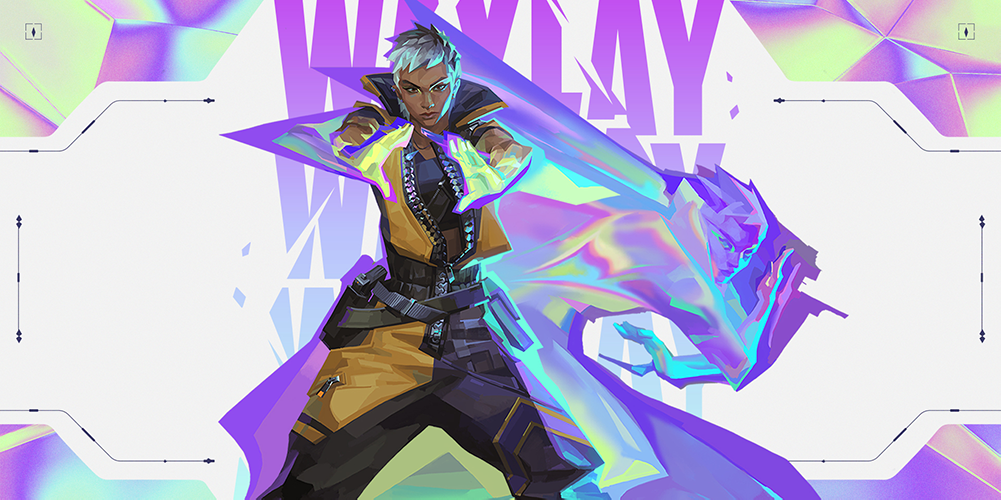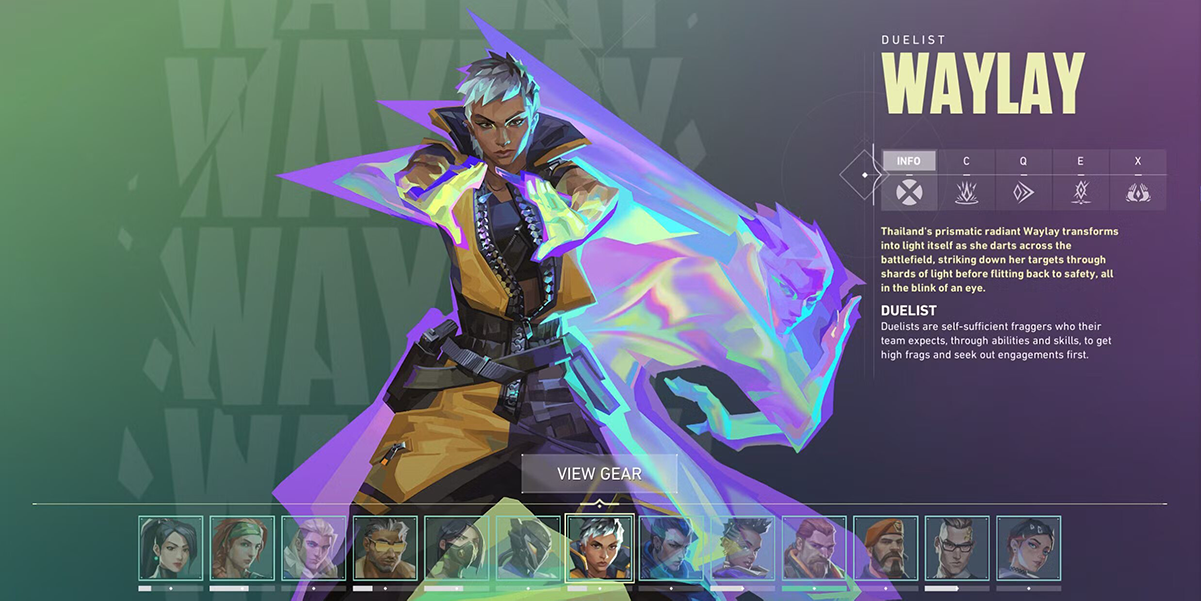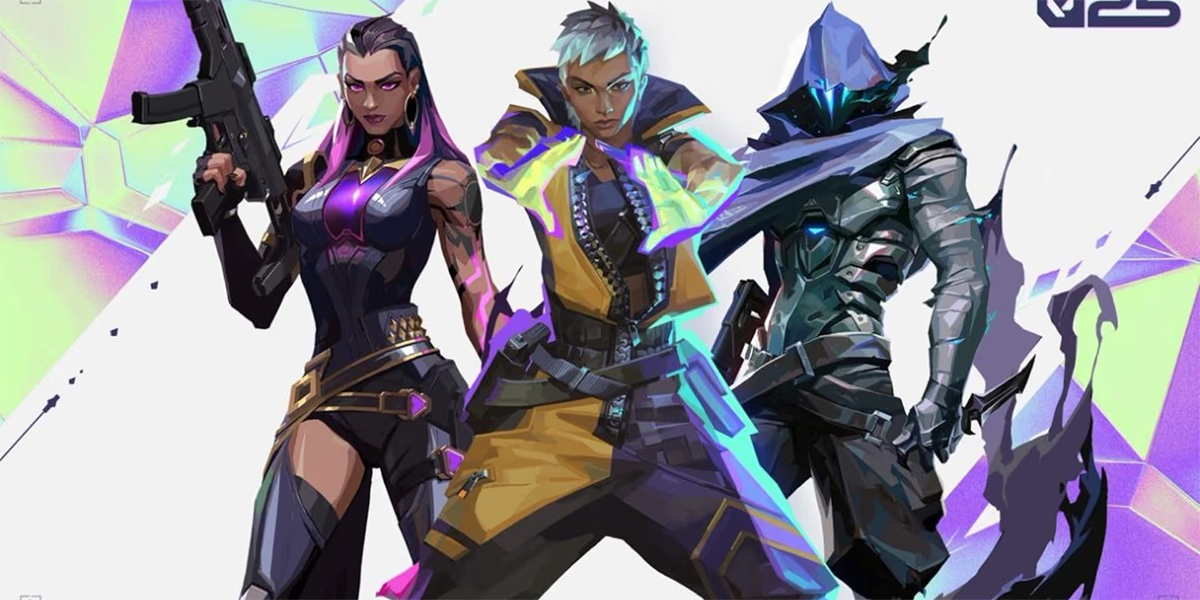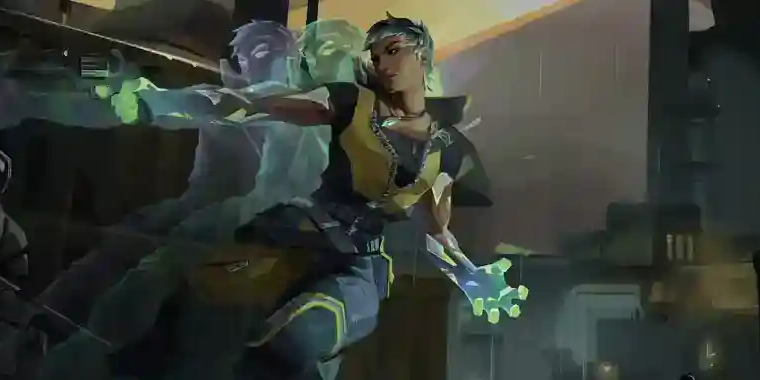The Waylay Conundrum & The Pressure Duelist Archetype

Alright, let's talk about Waylay. You've probably seen the tier lists, and you're likely a bit confused. One analyst puts her in B-tier, calling her a decent but less impactful choice. Another has her down in C-tier, suggesting she requires buffs to be considered regularly. Meanwhile, agents like Yoru, Neon, and Jett are consistently hailed as S-tier gods, defining the fast-paced, double-duelist meta with their explosive entry potential and mobility.
So, what's the deal? Is Waylay just a bad agent?
She doesn't fit the mold of a traditional duelist who creates space by being the first body through a chokepoint. Trying to play her like Raze or Jett will only lead to frustration and a swift trip back to the agent selection screen. Her impact is subtle, strategic, and requires a completely different mindset.
This is because Waylay isn't an Entry Duelist. She is a Pressure Duelist.
Forget about dashing onto a site and clicking heads. A Pressure Duelist's job is to win the round before the fight even starts. Her role is to manipulate, misdirect, and dismantle the enemy team's strategy from the shadows. She creates "map pressure," a term you might have heard but not fully grasped. This pressure isn't about threatening a direct attack; it's about making the enemy feel threatened everywhere at once. It's about forcing them to waste precious utility—a Sova dart, a Fade Haunt, a Cypher tripwire—on a ghost. It's about pulling a defender off a site, creating a 4v3 in your team's favor across the map.
Think of her less like a soldier and more like a saboteur. Her playstyle is rooted in the classic archetypes of the ambusher and the trapmaker, characters who win through cunning and preparation rather than brute force. She is the ultimate thinking player's duelist, and mastering her means mastering the art of the mind game. If you're the kind of player who loves to outsmart your opponents, to make them question every sound they hear and every shadow they see, then Waylay is the agent for you.
The Art of the Ambush: Deconstructing Waylay's Abilities

To truly understand how to play Waylay, you need to understand her tools. Her kit is designed not for direct confrontation, but for deception and control. Let's break down the hypothetical abilities that define her as the premier Pressure Duelist.
The Tools of Deception
Signature Ability (E) - Echo Step
Waylay places an invisible marker on the ground, which can even be placed through thin walls. When you activate the ability, the marker projects the sound of her footsteps—running, jumping, and landing—for a few seconds. This is your bread-and-butter tool for creating pressure. The sound is indistinguishable from your actual movement, forcing enemies to react. In a game where audio cues are paramount for predicting enemy movement and ability usage, Echo Step is a weapon of mass confusion.
Ability 1 (Q) - Sound Spike
This ability takes audio misdirection to the next level. Waylay launches a small device that sticks to any surface. When you trigger it, the device emits the distinct sound of a pre-selected weapon firing—a three-round Vandal burst, a single Operator shot, or a Phantom spray. Imagine the possibilities: faking an Operator holding an angle on Breeze to halt an enemy push in its tracks, or mimicking a Vandal fight in A-Main on Ascent to draw defenders away from a B-site execute. It's a tool for painting a false reality on the enemy's strategic canvas.
Ability 2 (C) - Ghost Veil
For a few seconds, Waylay becomes semi-transparent and her movement sounds (footsteps, jumping, landing) are completely muffled. While she's not fully invisible like Yoru in his ultimate, she becomes difficult to spot with peripheral vision and can slip past unwatched angles. This is your personal repositioning tool, perfect for crossing dangerous sightlines to set up an ambush or for escaping after you've secured a lurk pick. Firing your weapon or taking damage instantly breaks the effect, so it demands careful timing. This ability is a direct counter to players who rely too heavily on their headsets to clear corners.
Ultimate Ability (X) - Static Field
This is Waylay's answer to the criticism that she "lacks strong teamplay impact". She deploys a device that, after a short wind-up, creates a large, circular field of influence. For the duration, any enemy inside this field has their minimap completely scrambled. More importantly, their directional audio is distorted; they will hear a cacophony of phantom footsteps and muffled ability sounds, making it impossible to pinpoint where threats are coming from. This is a site-take or retake-winning ultimate. It turns a coordinated defense into a panicked mess, allowing your team to flood a site under a blanket of sensory overload and directly countering information abilities that rely on the minimap.
Core Playstyle: The Master Lurker
With this kit, your role becomes clear. You are not meant to be with your team.
On Attack, your default position is on the opposite side of the map from your team. While they probe one site, you are the solo agent applying pressure on the other. Use Echo Step to fake a presence in a main chokepoint. Use Sound Spike to make it sound like you have a teammate with you. Your goal is to force at least one, preferably two, defenders to rotate over to deal with your "push." Once you see them rotate, you have two choices: call for your team to execute on the now-weakened site, or use Ghost Veil to slip past the rotating players and catch them in the back.
On Defense, Waylay excels at playing for the retake. During the initial enemy push, use your abilities to slow them down and create uncertainty. An Echo Step in a chokepoint can make attackers hesitate, burning precious seconds off the clock. A Sound Spike that mimics a friendly Operator shot can stop a rush entirely. When it's time to retake a site, your Static Field ultimate is your trump card. Deploy it on the planted Spike, and watch as the defenders, now deaf and blind on their minimaps, are easily picked apart by your coordinated team.
Pro Tips & Common Mistakes
- Combine Ghost Veil with your Controller's smokes. An Omen or Clove smoke can provide the initial visual cover, and Ghost Veil will eliminate the audio cue of you passing through it, making you a true ghost.
- Use Sound Spike to mimic a weapon that forces a specific reaction. Faking an Operator shot on a long sightline will make enemies use utility to cross, while faking a Judge around a tight corner will make them afraid to push.
- Always be proactive - pressure must convert to advantage
- Always be communicating what you're doing and what the enemy is doing in response
- Playing like a traditional duelist. If you are entering a site with your team, you are wasting your potential.
- Being a passive lurker. A lurker who just hides on the other side of the map is a detriment to the team.
- Not converting successful lurks into team advantages
- Failing to communicate enemy rotations and movements
Waylay's Dream Team: Synergies and Compositions

Waylay is a specialist, and like any specialist, she thrives in the right environment. Dropping her into any random team composition is a recipe for disaster. To unlock her true potential, you need to build the team around her unique strengths, creating a well-oiled machine of deception and control.
Ideal Initiator Pairing: The Information Brokers
Waylay's entire game plan revolves around ambushing and outmaneuvering unsuspecting enemies. This strategy is ten times more effective when you know exactly where those enemies are. This is why her best friends are Sova and Fade.
Sova and Fade provide the precise, long-range intelligence that Waylay needs to operate safely and effectively. A Recon Bolt or a Haunt that reveals an enemy holding a specific angle allows Waylay to perfectly position her lurk for a free kill. The relationship is symbiotic: the initiator's recon empowers Waylay's ambush, and Waylay's audio misdirection can protect the initiator's utility.
In contrast, aggressive, close-range initiators like Breach or Gekko are less synergistic. Their kits are designed to facilitate a fast, five-person rush onto a site, a style of play that is completely at odds with Waylay's slow, methodical lurking.
Ideal Controller Pairing: The Global Puppeteer
To support a map-wide lurker, you need a Controller who can influence the map globally. This makes Omen and Astra the premier choices.
Omen is arguably Waylay's perfect partner. His ability to place Dark Cover smokes anywhere on the map provides instant cover for Waylay's lurks, no matter how deep she is in enemy territory. His Paranoia flash allows him to win his own duels, and his ultimate, From the Shadows, is the ultimate tool for a pincer attack. Imagine Waylay drawing attention on C-Long on Haven, only for Omen to teleport behind the rotating defenders for a devastating crossfire.
Astra's global presence offers similar benefits. She can use her Gravity Well to pull an enemy out of cover for Waylay to pick off, or use a Nova Pulse to stun a defender who is pushing Waylay's position, all from the safety of the other side of the map.
Controllers with more static, site-focused utility like Brimstone or Viper are less ideal. Their walls and smokes are powerful for site executes and post-plants, but they lack the flexibility to support a roaming agent like Waylay across the entire map.
Ideal Sentinel Pairing: The Unbreakable Anchor
If Waylay is going to be off on her own adventures, the rest of the team needs to be confident that their flanks are secure and that at least one site is locked down. This requires a strong anchor Sentinel.
Vyse and Cypher are the top contenders. Vyse's indestructible Shear wall and potent traps can hold a site against a full push, buying invaluable time. Cypher's classic setup of Tripwires and a Spycam can completely shut down a flank, giving the team peace of mind.
This setup enables the team to comfortably play a 4-1 default strategy. The main group of four can probe and pressure one area of the map, while Waylay works her magic on the other, knowing that their back is covered by an immovable Sentinel.
The "Anti-Synergy" Comp
A World of Opportunity: Waylay's Map-by-Map Breakdown

A specialist agent's value is often tied to the environment. Waylay is no exception. On some maps, her ability to create cross-map pressure is game-breaking. On others, her kit feels restricted and ineffective. Knowing where she shines is key to picking her with confidence.
S-Tier Maps: Her Strongholds
Fracture: This map is a Pressure Duelist's paradise. The unique H-shaped layout with dual attacker spawns is tailor-made for her playstyle. She can use her audio fakes from one spawn point to create the illusion of a full-scale attack, pulling defenders out of position while her team executes a quiet push from the opposite side. The multiple pathways and flanking routes make it nearly impossible for defenders to track her movements.
Haven: As the first map with three bomb sites, Haven naturally stretches defensive setups thin. This is where Waylay thrives. She can lurk down A-Long or C-Long, using Echo Step and Sound Spike to force a one-or-two-player rotation. This simple act can leave the middle of the map or the opposite site wide open for her team to seize control, creating a massive strategic advantage.
Corrode: The newest map, described as having wide-open sites and long lanes, rewards agents who can control space and execute deep lurks. Yoru is noted as a top duelist here for his ability to teleport into deep positions. Waylay can achieve a similar impact through deception. By controlling mid with her sound fakes, she can create opportunities to slip through areas like Dome or Elbow, appearing in unexpected locations to dismantle the defense from within.
A-Tier Maps: Highly Viable
Bind: The map's signature one-way teleporters are a powerful tool in Waylay's arsenal. She can use Sound Spike to mimic the sound of a weapon firing near the B-site teleporter exit, making the enemy team think a push is coming through Hookah. Meanwhile, she can use Ghost Veil to silently take the A-site teleporter for a devastating flank through Showers. The constant threat of a cross-map play makes her a nightmare to deal with here.
Ascent: A classic, well-balanced map where control of the large, open mid area is often the key to victory. Waylay can apply immense pressure by lurking down A-Main or B-Main. Her audio fakes can bait out crucial utility from defenders playing in Market or Tree Room, such as smokes or flashes, paving the way for her team to take mid control with fewer resources.
B-Tier Maps: Situational Picks
Lotus: While also a three-site map, Lotus presents a unique challenge. The rotating doors and breakable wall create loud, predictable audio cues that can give away her position. However, a clever Waylay player can turn this to her advantage, using the door sounds to mask her own movements or to bait enemies into predictable positions. Her effectiveness here is highly dependent on her ability to manipulate the map's unique mechanics.
Pearl: A more straightforward map with a heavy focus on its three main lanes. Lurking is a viable strategy, but the paths are more direct and easier for defenders to control. She can still find value by slowly working her way down B-Long or through Art, but she is more likely to be intercepted than on more complex maps.
C-Tier Maps: Her Challenges
Split: This map is Waylay's kryptonite. Its extreme verticality and tight, linear chokepoints offer very few opportunities for effective lurking. Flanking routes are limited and easily watched, and her sound-based abilities are less effective at drawing rotations when the map is so clearly divided.
Icebox: Similar to Split, Icebox's focus on verticality and its disconnected, multi-level sites make it difficult for a horizontal lurker to find impact. The horizontal ziplines, a key feature for rotation, create loud audio cues that completely negate her stealthy approach. It's best to leave Waylay on the bench for this one.
Waylay's Map Viability & Strategic Focus
For a quick reference during agent select, use this table to guide your decision.
| Map | Tier | Strategic Focus |
|---|---|---|
| Fracture | S | Fake pressure from the opposite spawn; pinch defenders from two sides. |
| Haven | S | Force rotations between the A and C sites; create openings for mid or B takes. |
| Corrode | S | Control mid with sound fakes; lurk through dome or elbow for deep flanks. |
| Bind | A | Manipulate teleporter sound cues to fake rotations and create cross-map pressure. |
| Ascent | A | Lurk A-Main or B-Main to bait out defensive utility and enable your team's mid control. |
| Lotus | B | Use the rotating doors for sound misdirection; punish slow enemy rotations. |
| Pearl | B | Standard lurk plays down B-long or through Art; less effective due to the simple layout. |
| Split | C | Very difficult; limited to basic lurking in Sewers or B-Main. Avoid if possible. |
| Icebox | C | Avoid; the map's verticality and loud ziplines work directly against her kit. |
Mind Games: Countering Waylay and Being Countered

Playing as or against Waylay is a constant chess match. She is an agent defined by information warfare. Understanding how to disrupt her game plan—and how she can disrupt yours—is the key to victory.
Waylay's Worst Nightmares: Her Counters
Waylay's lurking playstyle makes her vulnerable to agents who can either restrict her movement or expose her position.
Trap Sentinels: Cypher, Killjoy, and Chamber are Waylay's natural predators. Their deployable traps—Cypher's Trapwires, Killjoy's Turret and Alarmbot, and Chamber's Trademark—can completely shut down her flanking routes without requiring a player to be physically present. A single, well-placed trap can end her lurk before it even begins. Vyse is particularly lethal; her Shear wall trap can spring up behind Waylay, isolating her from her team for an easy, un-tradeable kill.
Information Initiators: A lurker's greatest asset is the element of surprise. Agents who can strip that away are a major threat. A well-timed Sova Recon Bolt, Fade Haunt, or KAY/O ZERO/POINT knife will instantly reveal Waylay's ambush position, turning her from the hunter into the hunted.
Movement Duelists: Even if Waylay gets the drop on an enemy, her advantage can be negated by pure mobility. Agents like Jett, Raze, and Yoru can use their movement abilities to instantly disengage from her ambush, reset the fight on their own terms, or even turn the tables and aggress on her before she's prepared.
Turning the Tables: How Waylay Counters Back
A skilled Waylay player anticipates these counters and uses her own kit to play around them.
Baiting the Traps: This is where Waylay's skill ceiling truly shows. Instead of blindly walking into a Sentinel's setup, she must use her Echo Step and Sound Spike to trigger the traps from a safe distance. Forcing a Killjoy to pop her Nanoswarms early or making a Cypher's tripwire activate on a phantom footstep not only wastes the enemy's utility but also gives your team valuable information about where the defensive setup is.
Playing Against Teleporters: Agents with teleport abilities like Omen, Yoru, and Chamber rely on their get-out-of-jail-free cards to hold aggressive angles. Waylay can counter this by placing her Sound Spike or Echo Step near their pre-placed teleport anchors. When the enemy teleports out to safety, they land in a confusing audio environment, making them vulnerable to a follow-up push. Her Static Field ultimate is a hard counter to a Chamber trying to escape, as it disorients him the moment he arrives at his anchor.
Countering Slows and Tethers: Abilities like Sage's Slow Orbs or Cypher's Trapwire can stop a lurk in its tracks. Waylay's Ghost Veil does not grant immunity to these effects. Therefore, her counterplay must be predictive, not reactive. She must use her audio fakes to bait out these abilities before she commits to a path, clearing the way for her real push.
The Waylay Buffs: A New Meta Queen in the Making?
The most intriguing piece of information about Waylay is the mention of recent buffs in a set of patch notes alongside the release of the new map, Corrode. To understand their potential impact, we must first revisit her core perceived weakness: a "lack of strong teamplay impact". Any significant buff would have been designed to address this directly. While the exact details are not provided, we can logically speculate on what these changes might have been.
Possibility 1: Adding a Debuff
One way to increase her teamplay value would be to add a secondary effect to her abilities. Perhaps her Echo Step or Sound Spike now applies a brief "Marked" or "Vulnerable" debuff to any enemy within a very small radius of the sound's origin. This would transform her misdirection tools into offensive assists, allowing her teammates to capitalize on the chaos she creates more directly.
Possibility 2: Enhancing her Ultimate
Her Static Field is already a powerful team-oriented ability. The buffs could have pushed it even further. For example, what if allies inside the Static Field now have their own footsteps and ability sounds muffled? This would turn the ultimate from a purely disruptive tool into a team-wide stealth-and-execute mechanic, making it one of the most powerful site-take abilities in the game.
Possibility 3: A Charge Rework
A simpler but still impactful buff could have been to her ability economy. Giving her an extra charge of Ghost Veil or making her signature Echo Step recharge over time would allow her to apply pressure more consistently throughout a round, increasing her overall impact without fundamentally changing her mechanics.
The Verdict on Waylay

Waylay is not an agent for everyone. She will not top the leaderboards for K/D ratio or ranked win rate. She demands patience, strategic thinking, and a deep understanding of game flow. She is an agent with a steep learning curve but an incredibly high ceiling. In the hands of a clever player—a true puppeteer—she can dismantle enemy teams from the inside out, winning rounds through pure psychological warfare.
The recent buffs suggest her time may be coming. Mastering her now, while she is still considered an off-meta pick, could put you far ahead of the curve. So, embrace the challenge. Learn to think like an ambusher. Become the ghost in the machine that every enemy team learns to fear. The Waylay playbook is open; it's time for you to write the next chapter.

